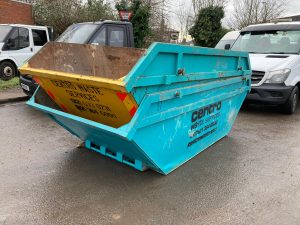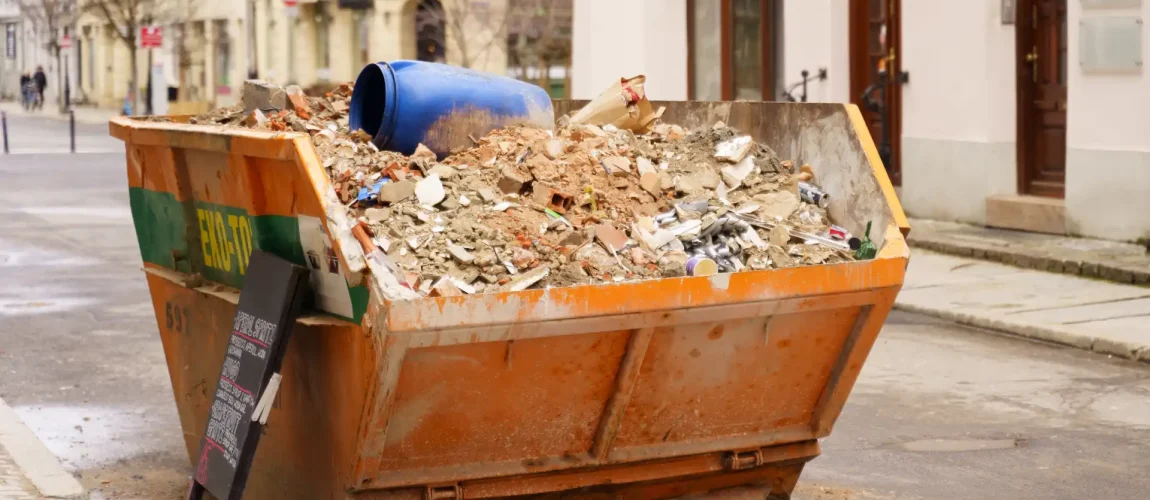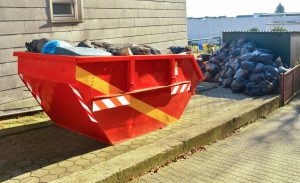Preparing your site for a skip delivery is an essential step in ensuring a smooth and hassle-free experience, whether for a domestic renovation or a commercial construction project. Proper preparation can help avoid unnecessary delays, additional costs, and potential safety hazards.
For domestic purposes, this may mean ensuring your driveway is clear, while for commercial sites, it could involve more detailed planning and coordination. This guide will walk you through the essential steps for preparing your site, catering to both domestic and commercial needs.
Domestic Skip Hire Preparation
When hiring a skip for domestic use, one of the first considerations is ensuring that the driveway or access point is completely clear. This means moving any vehicles, garden furniture, or other obstacles that might obstruct the skip lorry.
The size and weight of the skip lorry should also be taken into account, as it needs sufficient space to manoeuvre safely. If the driveway is narrow or the street is congested, you may need to consult with your neighbours to ensure their vehicles do not block access during delivery.
The condition of the ground where the skip will be placed is another critical factor. If you have a paved driveway, consider whether it can bear the weight of a full skip without cracking or shifting.
To protect delicate surfaces such as block paving or decorative concrete, you might place wooden planks or boards under the skip’s feet. This simple step can prevent unsightly damage and avoid costly repairs once the skip is removed. Even for those with gravel driveways or garden spaces, ensuring the ground is level and stable is crucial to maintaining safety throughout the hire period.
In addition to these practical considerations, it’s essential to think about your neighbours and the overall neighbourhood. Informing your neighbours in advance about the skip delivery can help to prevent any misunderstandings or inconveniences, such as blocked driveways or restricted access to shared paths.
Moreover, it’s wise to position the skip in a location that is both convenient for your project and mindful of your neighbours’ property, avoiding areas close to windows, gates, or entryways.

Commercial Skip Hire Preparation
Commercial skip hire requires a more thorough approach to site preparation, given the scale and complexity of most commercial projects. One of the first steps is to conduct a comprehensive site survey to determine the best possible location for the skip.
The survey should take into account not only the ease of access for delivery and collection but also the ongoing operations on the site. For instance, if the site is busy with other heavy machinery or vehicles, you’ll want to ensure the skip is positioned where it won’t disrupt the flow of work or create a safety hazard.
Another critical aspect of commercial skip hire is ensuring that all necessary permits and regulations are in place before delivery. If the skip is to be placed on a public road, pavement, or any other area outside of the site’s boundaries, a permit from the local council will likely be required.
Failing to secure the proper permits can result in fines or the skip being removed prematurely. Additionally, understanding the specific regulations in your area concerning skip placement, duration, and waste disposal is essential to avoid any legal complications during your project.
Safety precautions are paramount on commercial sites, and this extends to skip-hire as well. Once the skip’s location has been decided, it’s advisable to put up clear signage and, if necessary, barriers around the area to alert workers and visitors.
This not only helps prevent accidents but also ensures that the skip is used correctly, with waste being properly sorted and disposed of according to site guidelines. Coordination with site managers and workers is key to maintaining safety and efficiency when using skips in a commercial setting.

General Considerations for Both Domestic and Commercial Projects
Regardless of whether the skip is for domestic or commercial purposes, selecting the appropriate skip size is a crucial decision. The right size will depend on the volume and type of waste you expect to generate during your project.
Underestimating your needs can lead to overflows and the need for additional skips, while overestimating can result in unnecessary costs. It’s wise to consult with your skip hire provider to discuss your project in detail, ensuring you choose a skip that matches your requirements and optimises waste management.
Timing and scheduling are other important factors to consider for both domestic and commercial projects. Coordinating the delivery and collection of the skip to align with your project timeline can help prevent delays.
For example, you’ll want the skip delivered just before the bulk of your waste is generated and collected promptly once the skip is full, to avoid having it take up space unnecessarily. Proper timing also helps in managing site cleanliness and organisation, particularly on busy construction sites where space is at a premium.
Finally, environmental considerations should not be overlooked. Proper site preparation and planning can significantly reduce the environmental impact of your project.
This includes ensuring that waste is sorted correctly at the source, with recyclables and non-recyclables separated to minimise what ends up in landfill.
Additionally, reducing the number of trips needed for skip collection by choosing the right size and managing waste efficiently can help lower the carbon footprint associated with skip hire. By taking these steps, you can contribute to more sustainable practices in both domestic and commercial projects.
Conclusion
In conclusion, thorough preparation is key to a successful skip hire experience, whether for a domestic renovation or a large commercial project.
By ensuring that your site is ready, with clear access, proper ground conditions, and the necessary permits, you can avoid common pitfalls and make the most of your skip hire.
Proper planning not only saves time and money but also enhances safety and reduces environmental impact. Always consult with your skip hire provider to ensure that you meet all requirements and get the best results for your project.







